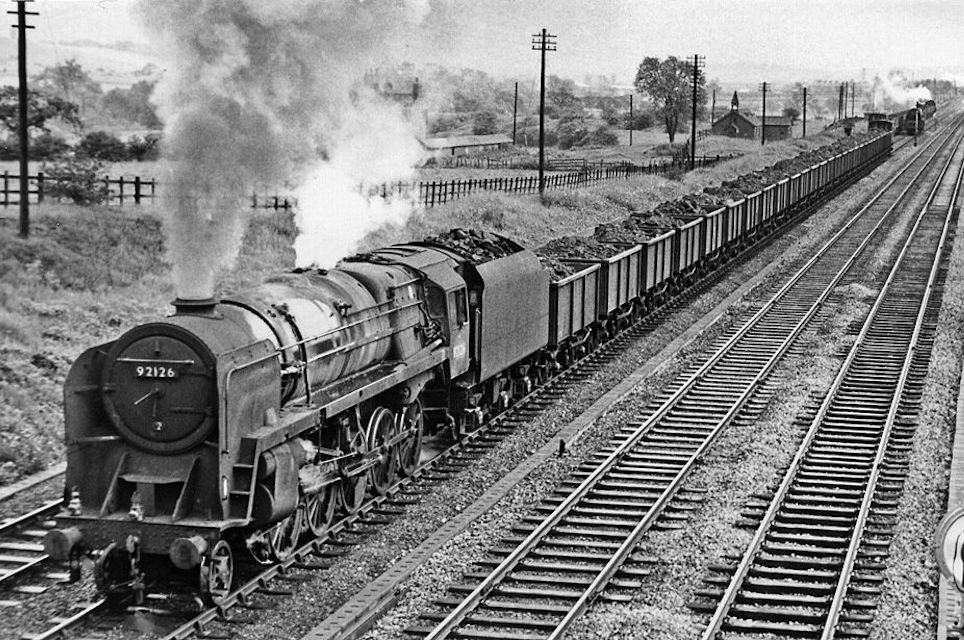Back to the future for UK rail freight with steam powered ’66

There is a modern twist on the original power source for the railways. An English company is working to convert the diesel workhorse of the UK freight network, to run under steam power. Will this mean a return to chimneys puffing columns of smoke as firemen toil and sweat to shovel coal into the firebox? Not quite, say Steamology, who have a much more modern and hi-tech solution.
Steamology, a specialist company based in Hampshire in the south of England, has received a grant of 350,000 British pounds (386,000 euro) as part of the UK government’s ’First of a Kind 2020’ competition. The entire funding package is worth 3.5 million British pounds (3.86 million euro). The firm is using the investment to develop its Water to Water (W2W) system, a zero-emission compact steam generator that runs on oxygen and hydrogen to drive a turbine, which will charge battery packs onboard trains. They believe that the W2W system could be used as an environmentally friendly way to power trains in the future, and also to convert locomotives of the past.
New lease on life for industry workhorse
The dawn of the new steam age is to be the subject of an interactive lecture, given next month to members of the Rail Freight Group, by Steamology’s Matt Candy, the founder of the business. The list of ingenious projects funded by First of a Kind looks like the line up from Q’s workshops in a James Bond movie. However, if sound bending walls, vegetation detecting artificial intelligence, and damage detecting drones leave your imagination shunted off into a siding, then perhaps the thought of a ’66 filling up with inexpensive and non-polluting water might just be your licence to kill all that fossil fuel pollution. “We are delighted to have received a share of 3.5 million to support decarbonising our railway system”, said Candy,Matt Candy, as he looked forward to presenting the technology to the RFG audience next month.

The key to Steamology’s enterprise is not so much the change of fuel system, it is the prospect of extending the life of an almost ubiquitous locomotive class, far into the carbon free future, and avoiding the expensive state-funded mistakes of the past. Britain was undecided after the British Railways Modernisation Plan of 1955, and was still building steam locomotives into the 1960s. Consequently, almost new motive power was unceremoniously scraped by 1968, after less years service than the average family car.
Fastest kettle on wheels
It was in car technology that Steamolgy made their name. Just over a a decade ago, the company captured an unlikely world record, for the fastest steam-powered car in the world. Their flying kettle was no slouch at coming to the boil, reaching over 150 miles per hour (225kph). That world beater had been in development for ten years, and their technology has moved on since then, scaling up from the three-tonne road monster, to a super-heated high-pressure turbine that can power a freight train, albeit not necessarily to 150 miles per hour, yet.

Any witness of the record-breaking run will remember that the car was chased by a monsoon cloud of exhaust water vapour. The rail-version is intended to be a little less damp. At the heart of the enclosed-cycle W2W system is a compact energy dense steam generator. The steam is generated using energy stored as compressed hydrogen and oxygen gas in tanks. So, to the disappointment of enthusiasts and to the relief of environmentalists, there is no coal tender. Instead, high pressure superheated steam is used to drive a turbine to do useful work by generating electricity. From there, it is quite literally full steam ahead.
By 2040 there will be no alternative
Steam-electric replaces diesel-electric, which might just bridge the diesel versus battery energy gap. It should be a simple concept to engineers in the audience. So simple in fact, it has only taken twenty years to reach this level of sophistication. “Steamology is an innovative and transformative project which uses steam from hydrogen to power our trains, making the network more efficient and cleaner”, says Candy in a characteristically dismissive way of the two decades of toil to reach this far.
With diesel outlawed from 2040, there is only another twenty years to go until there is no alternative to finding an alternative fuel. Having gone from zero to 150 miles per hour and a freight locomotive concept in that timescale, who knows where their technology will be in another twenty years. Nowhere slow, that’s for sure.
The Rail Freight Group members’ webinar with Steamology is on 11 November at 1300UK. Details on the RFG website.
You just read one of our premium articles free of charge
Want full access? Take advantage of our exclusive offer




